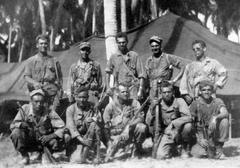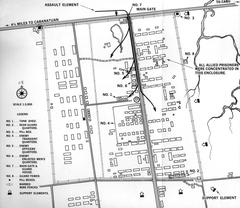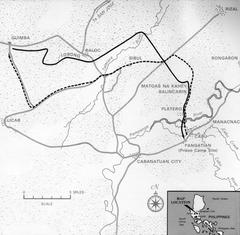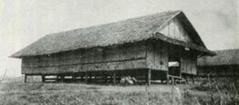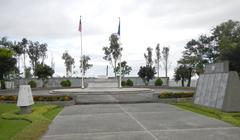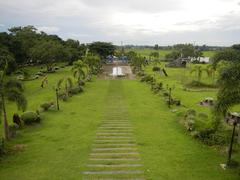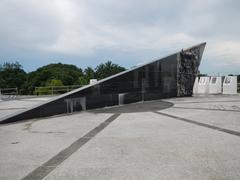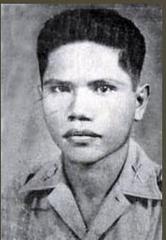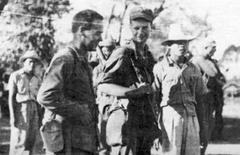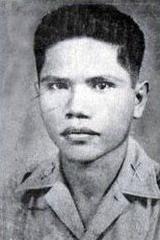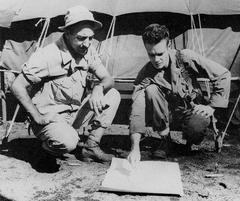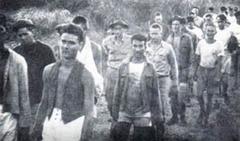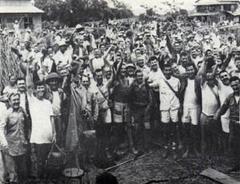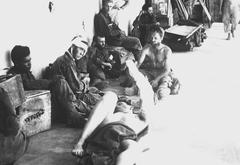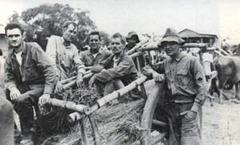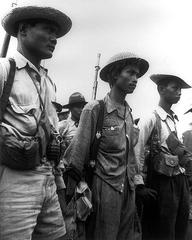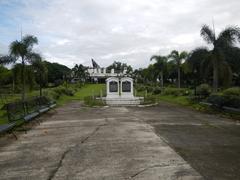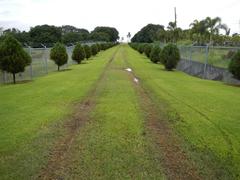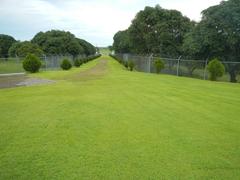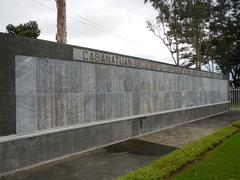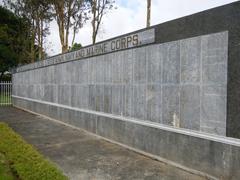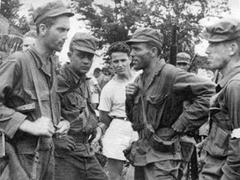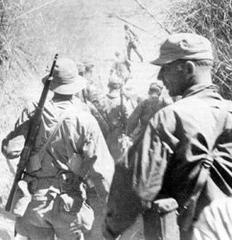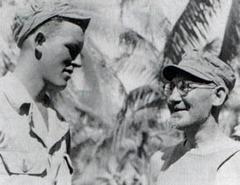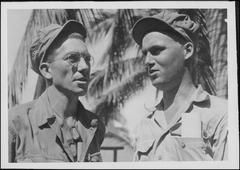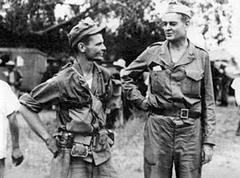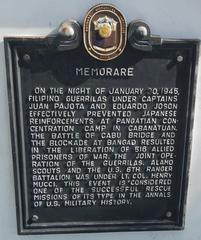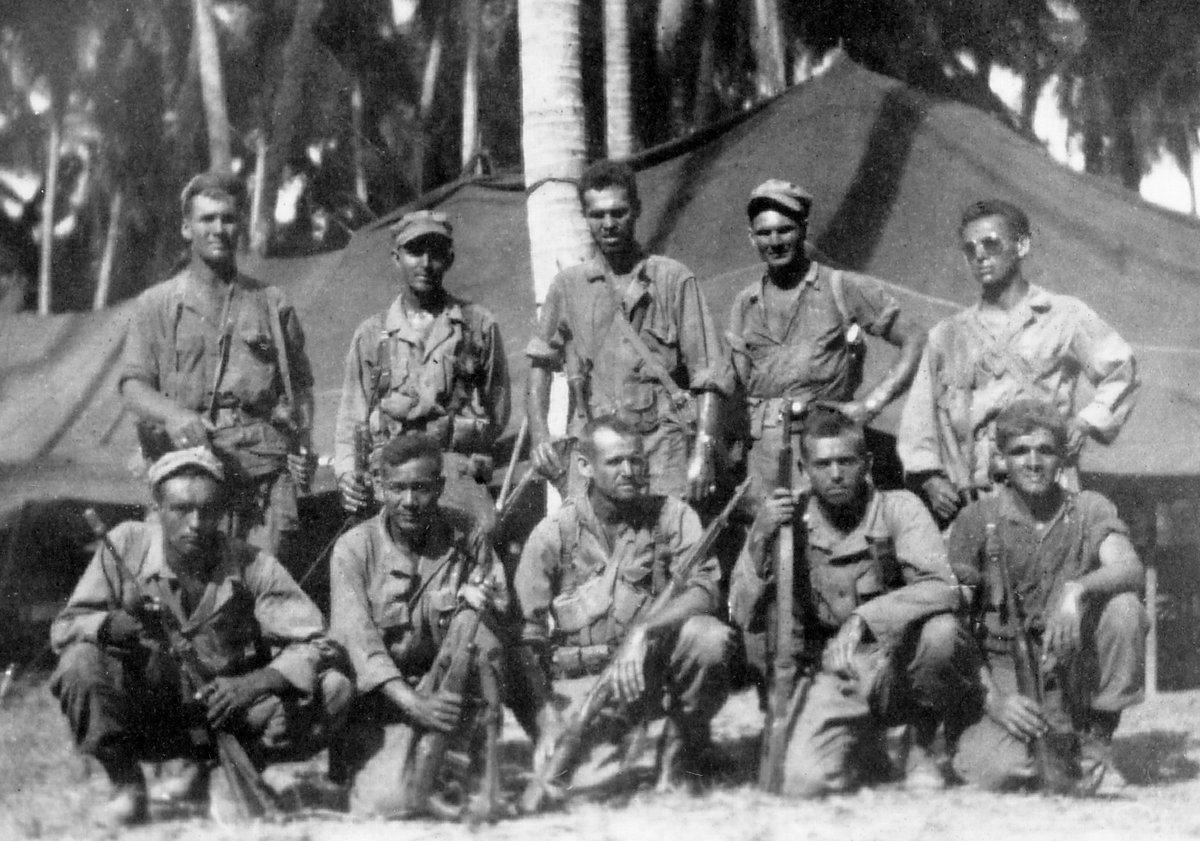
Raid at Cabanatuan: Visiting Hours, Tickets, and Historical Sites Guide
Date: 14/06/2025
Introduction to the Raid at Cabanatuan and Its Historical Significance
The Raid at Cabanatuan and its related historical sites in Cabanatuan City, Nueva Ecija, Philippines, are profound reminders of courage, sacrifice, and resilience during World War II. Central to this history is the Cabanatuan Prisoner of War (POW) Camp, also known as Camp Pangatian, where thousands of Allied prisoners suffered under harsh conditions following the fall of Bataan and Corregidor in 1942. The story of this camp, defined by malnutrition, disease, and maltreatment, is essential for understanding the Pacific Theater and the endurance of those interned (USA Inquirer).
The daring rescue mission, known as the Raid at Cabanatuan, took place on January 30, 1945. This operation, involving Filipino guerrillas and American soldiers, liberated over 500 Allied prisoners and prevented a potential massacre as Japanese forces retreated. The raid is celebrated as a symbol of tactical brilliance, international cooperation, and highlights the pivotal role of the Philippines in the Allied victory (Western Journal).
Today, visitors can immerse themselves in the rich history of Cabanatuan through sites such as the Cabanatuan POW Camp grounds, the Camp Pangatian Memorial Shrine, and the Raid at Cabanatuan Memorial. This guide offers comprehensive information on visiting these landmarks, detailing operating hours, ticketing, accessibility, transport, nearby attractions, and practical travel tips. Whether you are a history enthusiast, student, or cultural traveler, this resource will help you appreciate the enduring legacy of Cabanatuan’s WWII heritage (Guide to the Philippines; Traveloka).
Table of Contents
- Introduction
- Origins and Establishment of the Cabanatuan POW Camp
- Life and Conditions in the Camp
- Visiting the Cabanatuan POW Camp
- Nearby Attractions in Nueva Ecija
- The Cabanatuan Raid: History, Significance, and Visitor Information
- Camp Pangatian Memorial Shrine Guide
- Complete Guide to Visiting the Raid at Cabanatuan Memorial
- Summary and Visitor Recommendations
- Sources and Official Links
Cabanatuan POW Camp: A Historical Site and Visitor’s Guide
Origins and Establishment
The Cabanatuan POW Camp was established in June 1942, following the surrender of Allied forces in Bataan and Corregidor. Occupying a former Philippine Commonwealth Army training facility near Cabanatuan City, it became the main POW camp in the Philippines, accommodating thousands of prisoners—primarily Americans and Filipinos—transferred from the notorious Camp O’Donnell in Tarlac (USA Inquirer).
At Camp O’Donnell, mortality rates were extreme, with daily deaths sometimes reaching 30 to 40 and some 1,500 Americans dying shortly after arrival. The shift to Cabanatuan aimed to reduce overcrowding, but conditions remained harsh.
Life and Conditions in the Camp
An estimated 9,000 POWs passed through Cabanatuan. Approximately one-third died from starvation, disease, and abuse. Despite the extreme hardship, prisoners showed remarkable resilience and camaraderie, creating a lasting legacy of courage.
Visiting the Cabanatuan POW Camp
Visiting Hours:
Tuesday to Sunday, 8:00 AM to 5:00 PM. Closed on Mondays and major Philippine holidays.
Tickets and Admission:
Admission is free. Guided tours are available for a nominal fee, supporting site preservation.
Guided Tours and Special Events:
Guided tours provide detailed historical insights, highlighting key locations including original barracks and the POW cemetery. Annual events occur on the anniversary of the Bataan Death March and Liberation Day.
Accessibility:
Wheelchair-accessible paths and ramps are present. Visitors with mobility needs should contact the site office in advance for personalized assistance.
Photographic Spots:
Photography is welcome. Iconic spots include the memorial monuments and the POW cemetery, offering thoughtful visual documentation.
Nearby Attractions in Nueva Ecija
- Gen. Alejo Santos Museum and Library
- Cabanatuan Cathedral
- Heritage District
These sites, along with the vibrant city center, provide further cultural and historical context to your visit.
Travel Tips
- Wear comfortable shoes and bring water.
- Weekdays are less crowded.
- Consider hiring a local guide for enhanced context.
FAQ
How do I get to the Cabanatuan POW Camp?
Located near Cabanatuan City, reachable by bus or private car from Manila (approx. 3-4 hours).
Are tickets required?
General admission is free; guided tours require a small fee.
Is the site accessible?
Yes, with paved paths and ramps.
Are guided tours available?
Yes, daily for a nominal fee.
The Cabanatuan Raid: History, Significance, and Visitor Information
Historical Context and Urgency
The POWs at Cabanatuan were survivors of the Bataan Death March, a brutal forced transfer in 1942 that led to thousands of deaths (Western Journal). By January 1945, American forces advancing across Luzon learned of the imminent threat of a massacre at Cabanatuan, spurring the bold rescue mission.
Cultural and Historical Significance
The Cabanatuan Raid exemplifies courage, tactical skill, and the enduring partnership between Filipino and American soldiers. It remains a powerful symbol of the Philippines’ role in WWII.
Visiting the Cabanatuan Memorial
Visiting Hours and Tickets:
Tuesday to Sunday, 8:00 AM to 5:00 PM. Tickets: PHP 50 (adults), PHP 25 (students/seniors). Group visits can be arranged in advance.
Guided Tours and Accessibility:
Daily guided tours provide historical context and personal stories. The site is wheelchair accessible.
Special Events:
January 30th marks the annual commemoration, featuring wreath-laying, reenactments, and lectures.
Nearby Attractions:
The Bataan Death March Memorial and the Philippine Military Academy offer deeper insights into the region’s wartime legacy.
Travel Tips:
- Visit early or late in the day to avoid heat.
- Bring comfortable shoes, water, and a camera.
Visuals and Media:
The site features monuments and gardens. Official tourism websites provide virtual tours and educational content.
Camp Pangatian Memorial Shrine Visiting Hours, Tickets & Historical Guide
Historical Background
Originally a US Army training facility, Camp Pangatian was repurposed as a POW camp by the Japanese in 1942 (Guide to the Philippines; PS Balita). It held more than 8,000 Allied POWs, enduring harsh conditions before many were sent to labor camps abroad.
By 1944, only about 500 POWs remained, making the rescue mission both urgent and critical.
Visiting Camp Pangatian Memorial Shrine
- Visiting Hours: Tuesday to Sunday, 8:00 AM to 5:00 PM. Closed Mondays and major holidays.
- Admission: Free for all visitors.
- How to Get There: Easily accessible from Cabanatuan City via jeepney, tricycle, or taxi. Ample parking is available.
- Accessibility: Paved paths and ramps, restrooms, souvenir shop. Guided tours by appointment via the city tourism office.
- Special Events: April 9 (Fall of Bataan anniversary) features ceremonies and educational activities.
- Nearby Attractions: Cabanatuan Cathedral and the Heritage District.
Cultural Significance
The shrine honors the resilience of WWII POWs and serves as an educational site about wartime sacrifices.
FAQ
What are the visiting hours?
Tuesday to Sunday, 8:00 AM to 5:00 PM.
Is there an entrance fee?
No, admission is free.
Are guided tours available?
Yes, by appointment.
How do I get there?
Accessible by public transport to Cabanatuan City and local tricycles or taxis.
Are there special events?
Yes, especially on April 9.
Complete Guide to Visiting the Raid at Cabanatuan Memorial
Visiting Hours and Tickets
- Hours: Daily, 8:00 AM to 5:00 PM.
- Admission: Free for all visitors.
Getting There and Accessibility
Location:
A few kilometers outside Cabanatuan City. Accessible by private vehicle, tricycle, or jeepney. Manila is 120 km south (3–4 hours by car or bus) (Traveloka).
Transport:
- Private Vehicle: Most convenient; parking available.
- Public Transport: Regular buses from Manila, with local tricycles or jeepneys for the last stretch.
- Local Tours: Available with historical narration and multi-site itineraries.
Site Facilities and Visitor Amenities
- Memorial Grounds: Manicured lawns, commemorative plaques, and monuments (Hop ‘N Cruise).
- Accessibility: Ramps, paved paths, accessible restrooms.
- Guided Tours: Bookable through agencies or the tourism office—ideal for in-depth learning.
- Photo Opportunities: Central monument, historical plaques, and gardens.
Best Times to Visit
- Weather: Dry season (November–April) is best; December–February offers cooler temperatures (Traveloka).
- Special Events: January 30 commemorative ceremonies (MilitarySpot.com).
- Crowds: Weekdays are quieter.
Etiquette and Respectful Conduct
- Dress modestly and comfortably.
- Maintain respectful silence, especially during ceremonies.
- Use cameras discreetly.
- Dispose of waste properly.
What to Bring
- Water, light snacks
- Sun protection (hat, sunscreen)
- Rain gear during wet season
- Camera or smartphone
Nearby Attractions and Activities
- Freedom Park: Open daily, popular for relaxation.
- Plaza Lucero: A hub of Cabanatuan’s cultural district.
- Local Cuisine: Try restaurants like Hapag Vicenticos (Hop ‘N Cruise).
Accommodations
- Hotel Sogo Cabanatuan (budget)
- Harvest Hotel (mid-range)
- Cabua-an Beach Resort - Hostel (resort-style)
- Spaces by Eco Hotel (eco-friendly)
Book in advance for commemorative events (Traveloka).
Safety and Security
Cabanatuan is generally safe; secure valuables and follow local guidelines.
Supporting the Local Community
Support local guides, shops, and restaurants to help preserve these important sites (Traveloka).
Additional Tips
- Check for event schedules or maintenance closures.
- Combine your visit with other Nueva Ecija attractions.
- The site is excellent for educational trips.
Frequently Asked Questions (FAQ)
What are the memorial’s visiting hours?
8:00 AM to 5:00 PM daily.
Is admission free?
Yes.
Are guided tours available?
Yes, bookable through local agencies or the tourism office.
When is the best time to visit?
December to February for cooler, drier weather.
Summary of Key Points and Visitor Recommendations
Visiting Cabanatuan’s WWII sites—Cabanatuan POW Camp, Camp Pangatian Memorial Shrine, and the Raid at Cabanatuan Memorial—offers a powerful journey into wartime history. These sites collectively honor the sacrifice of Allied prisoners and their liberators, while annual events, guided tours, and nearby attractions provide a comprehensive, educational experience.
For the best experience:
- Visit during the dry season.
- Take advantage of guided tours.
- Explore additional local sites like the Bataan Death March Memorial and Cabanatuan’s heritage districts.
- Support the local community during your stay.
Embrace the solemn lessons of the Raid at Cabanatuan, and help preserve its legacy for future generations. Use official tourism platforms and the Audiala app for guided tours and updates (MilitarySpot.com; Hop ‘N Cruise).
Sources and Official Links for Further Information
- USA Inquirer
- Western Journal
- Guide to the Philippines
- PS Balita
- Traveloka
- MilitarySpot.com
- Hop ‘N Cruise
